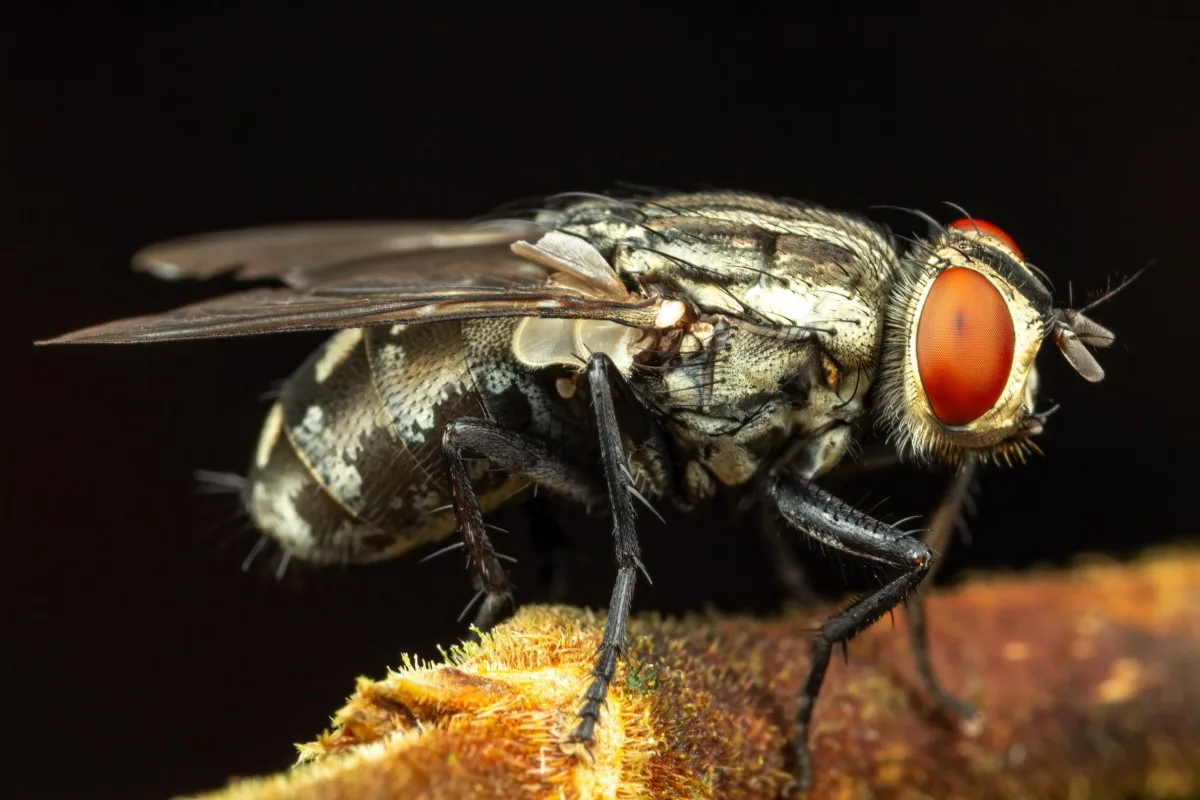
Right up there with ants, wasps, and mosquitoes, house flies are one of the summer’s most annoying insect pests. (Although you really do need to learn to love wasps.)
Getting all up in your personal space, house flies will buzz around your head, crawl over your tabletops and food prep surfaces, take a sample of your freshly made spread, and then land right on you, using their stick-like tongue to taste your oily skin and salty sweat.
All this wouldn’t even be so bad but house flies are little flying disease vectors that can carry pathogens and spread food-borne illnesses like E. coli and dysentery.
Although they play an important ecological role in breaking down and recycling organic matter, house flies come into regular contact with some pretty nasty stuff. They spend much of their lives eating, living, and reproducing in rotting food, animal carcasses, and feces.
How to Get Rid of House Flies Naturally
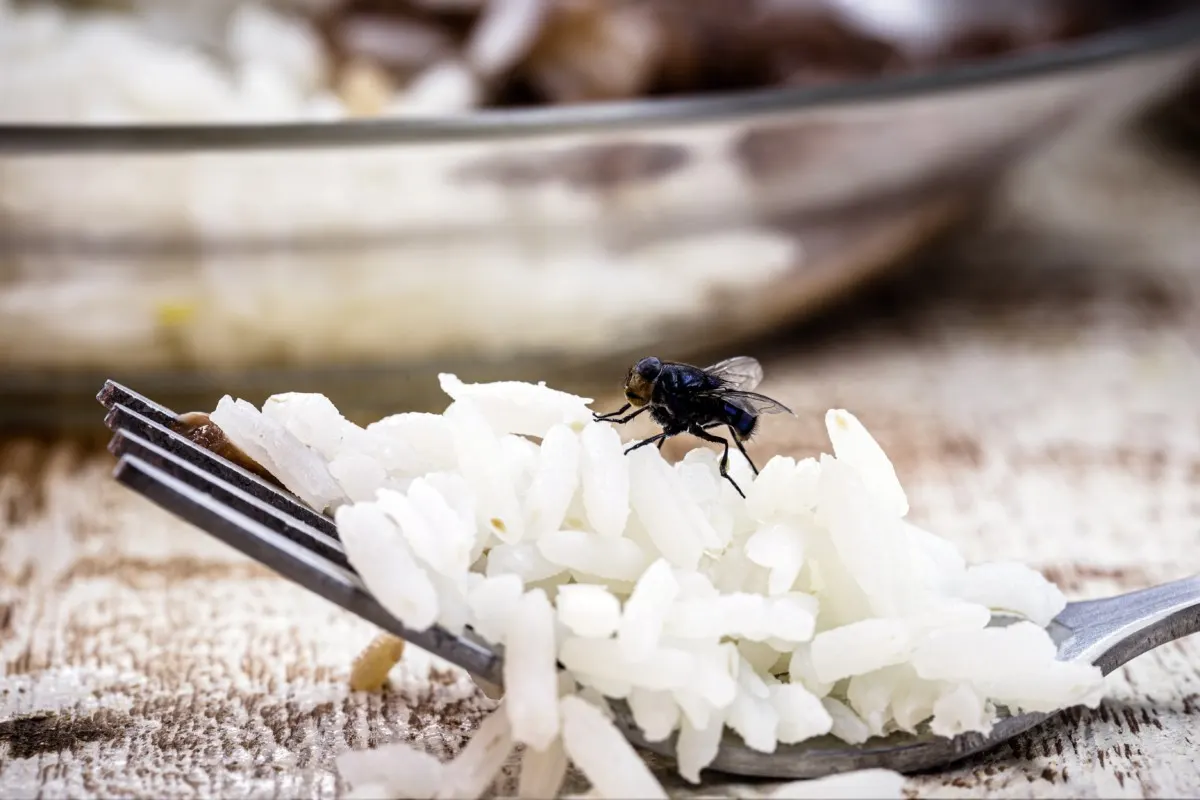
Having one or two house flies buzzing around your home might not seem like a big deal, but it only takes one female finding her way inside to create a sudden influx of house flies.
Laying around 500 eggs over her short, 30-day lifespan, female house flies will quickly deposit several batches of eggs – anywhere between 75 to 150 per shot – in warm, dark, and moist organic matter.
When the conditions are right, the swarm of flies can be perpetual with successive generations living in your home throughout the entire summer.
Aside from patching up gaps and holes in doors, windows, and screens, here’s what you can do to ensure a handful of flies doesn’t turn into a full-scale invasion.
1. Grow House Fly Repellents

The strong fragrance of certain herbs can help drive away bothersome house flies.
Place these herbs on a windowsill inside your home as well as in pots on your porch, patio, and other outdoor spaces where house flies are known to harangue and harass:
2. Keep Carnivorous Plants
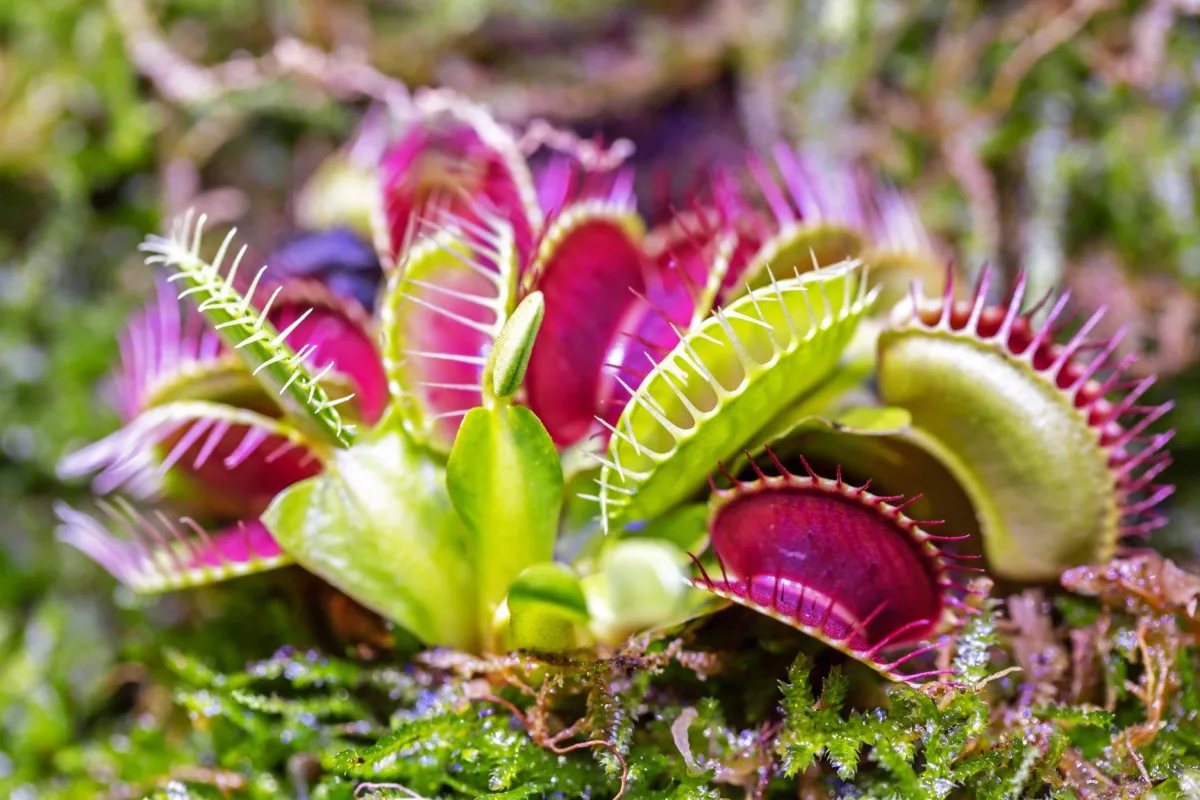
Carnivorous plants lure flying and crawling insects to their demise with modified leaves that attract, capture, and then digest the prey.
Drawing them in with the sweet scent of nectar, this unusual and fascinating order of plants employs various mechanisms to ensnare bugs. Venus flytrap will seize insects in its toothy jaws, pitcher plants have deep cups that serve as pitfalls, and sundews grow long and sticky tentacles that work as a glue trap.
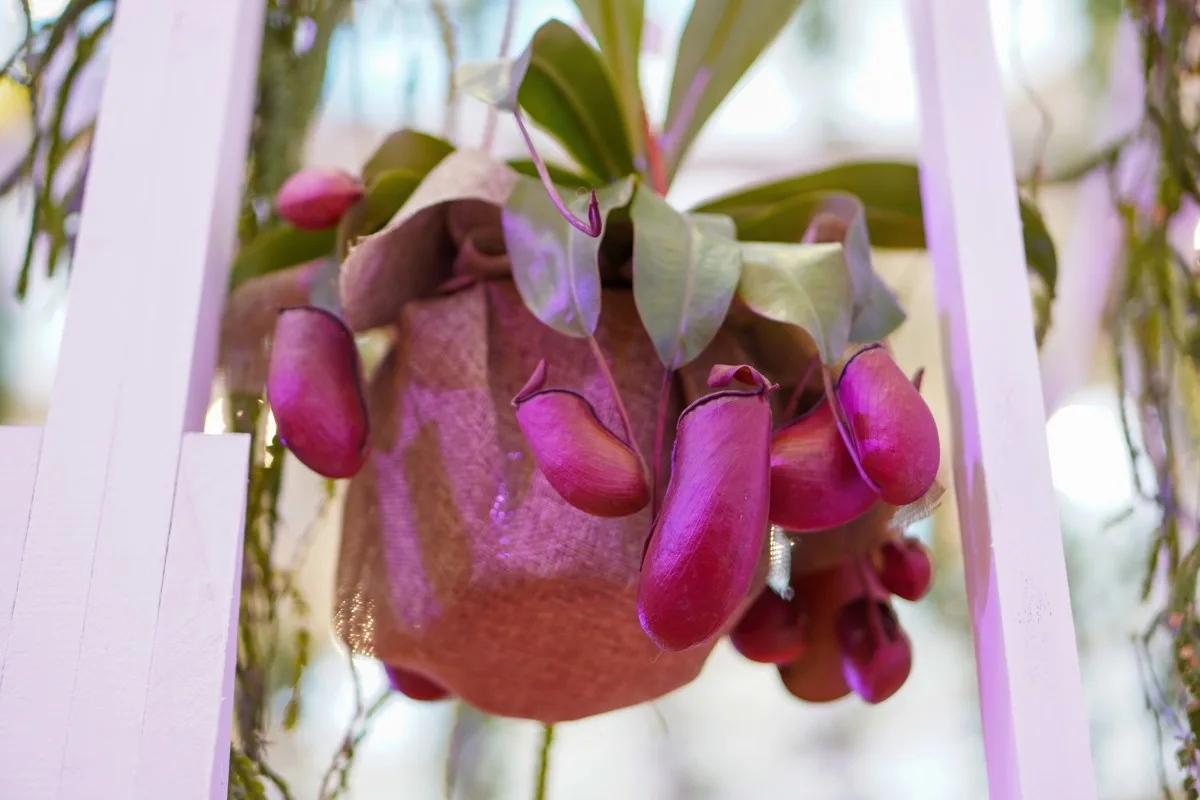
These plants will certainly do their part in keeping house fly populations down, along with other problematic pests like fungus gnats, fruit flies, mosquitoes, ants, and beetles.
To keep carnivorous plants happy indoors, you’ll need to replicate the boggy conditions from which they hail. That means plenty of light and humidity, as well as low-nutrient soil that you never need to fertilize.
3. Make Cayenne Pepper Spray
Another way to keep house flies from darkening your door is to mix up a repellent spray with cayenne peppers.
Cayenne is highly irritating to house flies and other undesirable bugs. Spritz it around entrances, windows, and other places you want to make unwelcome to encroaching pests.
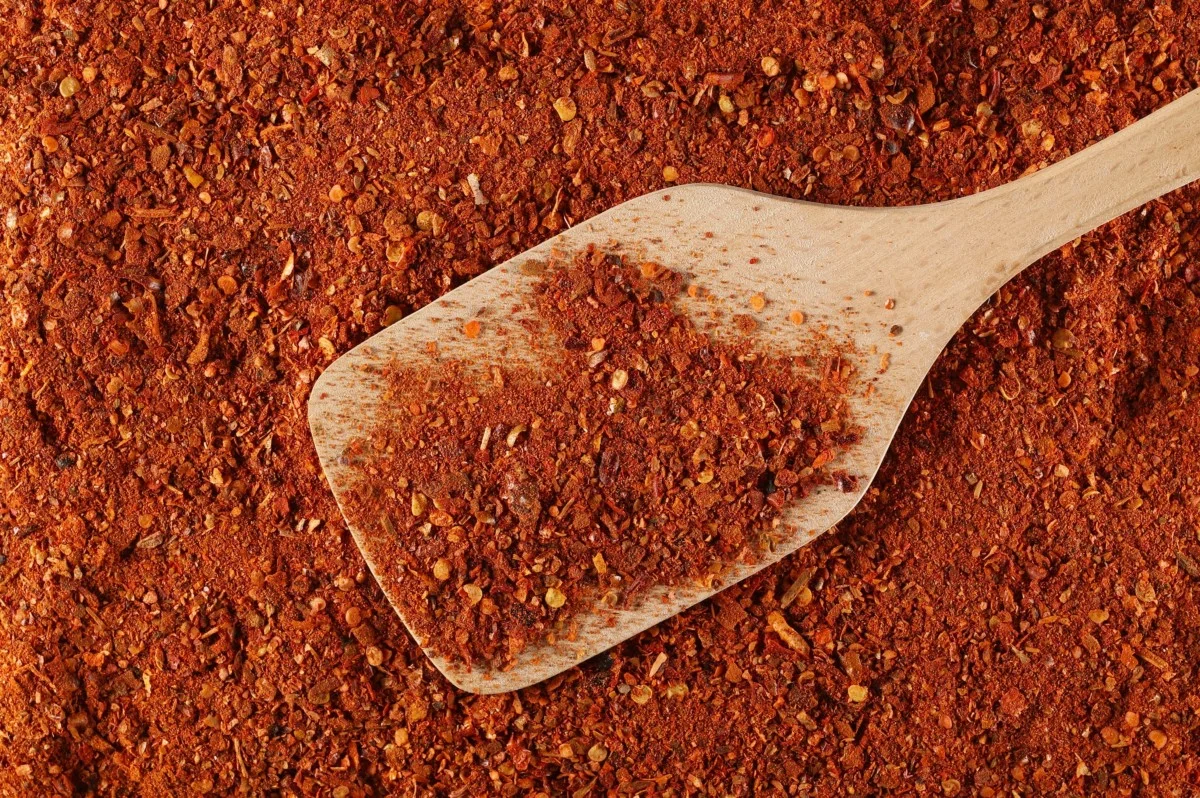
To make cayenne pepper spray:
- For dried cayenne pepper from your spice rack, combine 2 tablespoons of powder per gallon of water.
- To use fresh cayenne peppers, chop up a half cup and let it steep in 2 cups of water.
- If you have a cayenne-based hot sauce on hand, stir 2 tablespoons with 2 cups of water.
4. Use Citrus Peels
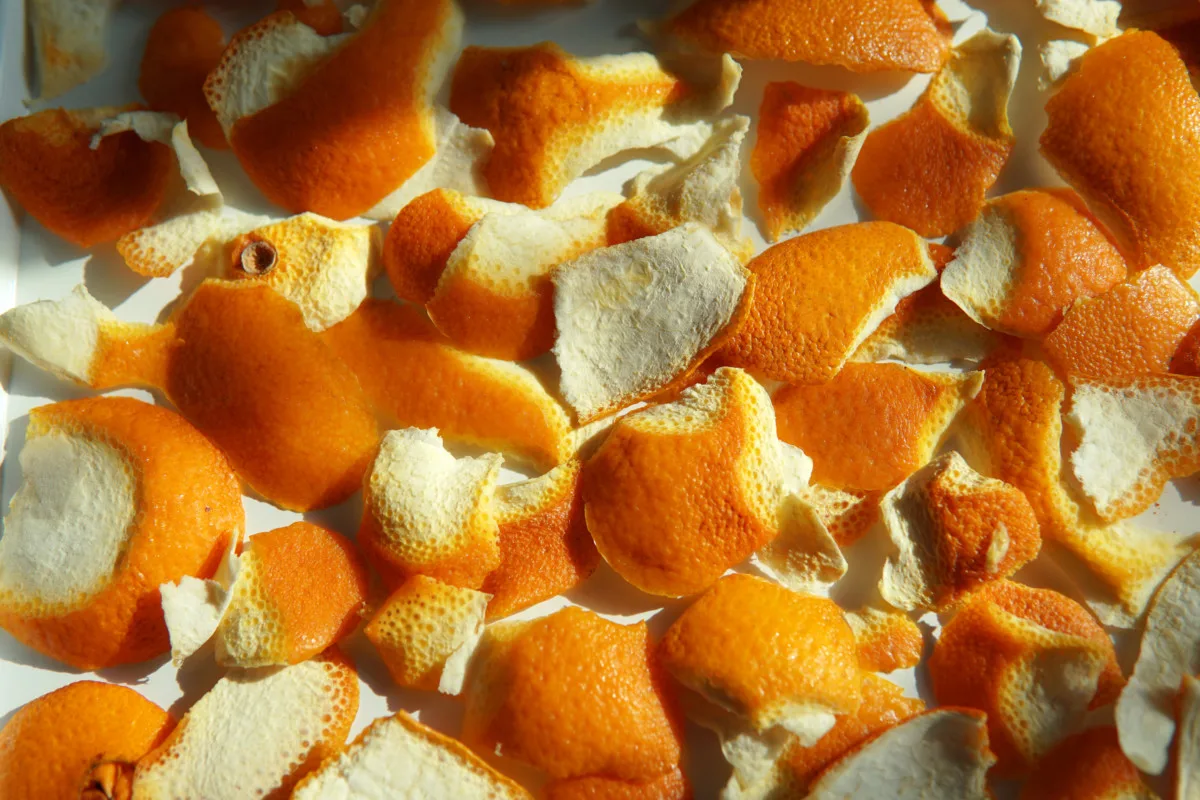
House flies – along with ants, fleas, roaches, silverfish, mosquitoes, and many other insects – abhor the smell of citrus oils.
The peels and zests from oranges, lemons, limes, grapefruit, and other citrus fruits contain limonene, a potent insect repellent that kills on contact.
Citrus peels can be placed around the garden, rubbed on the skin, or set down on windowsills and near entrances to keep bugs away. Give the peel a squeeze every so often to release more oils. Replace the peels with fresh ones once they’ve dried up.
Alternatively, you can make a citrus oil spray by boiling the rinds in water for 5 minutes. Remove from heat and let the mixture soak for 24 hours. Strain out the peels and transfer the liquid to a spray bottle.
5. Build Fly Traps
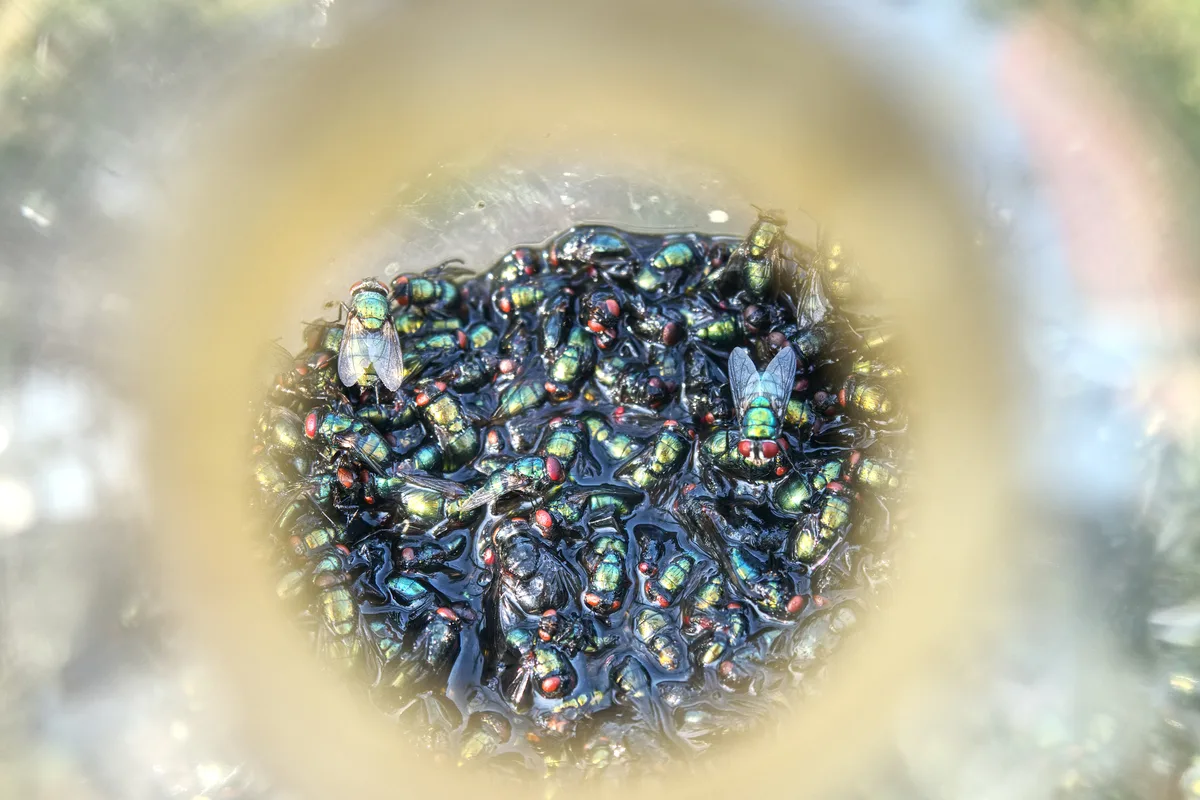
It’s easy to make your own fly traps from slightly modified soda bottles.
Cut off the top third of the bottle. Fill the bottom with sugar water or other bait such as spoiled wine, a blob of honey, or a few pieces of overripe fruit.
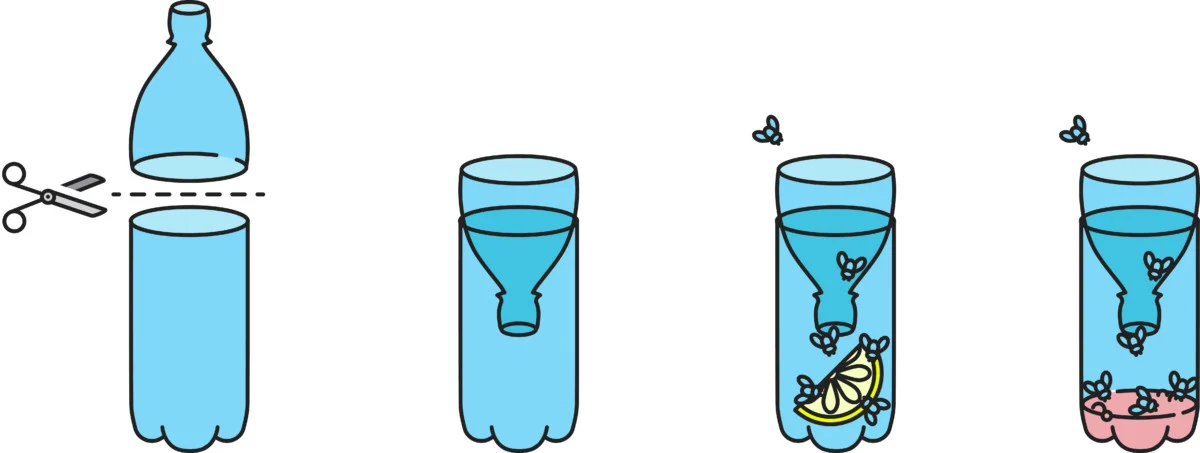
Remove the cap from the top and nestle it, upside down, into the lower part of the bottle to create a funnel. The house flies will be drawn to the attractant through the funnel but won’t be able to escape once inside.
6. Learn the Proper Swatting Technique
One of the more irksome qualities of the house fly is how easily it is able to evade attempts to clobber it with a fly swatter or a rolled-up newspaper.
It’s the stuff of comedies. The reason they’re so good at making us look like fools is because house flies process visual information seven times faster than we do. To flies, humans move in slow motion.
But according to the latest in fly-swatting science, the technique that garners the most success is to aim your strike just ahead of the fly’s current position.
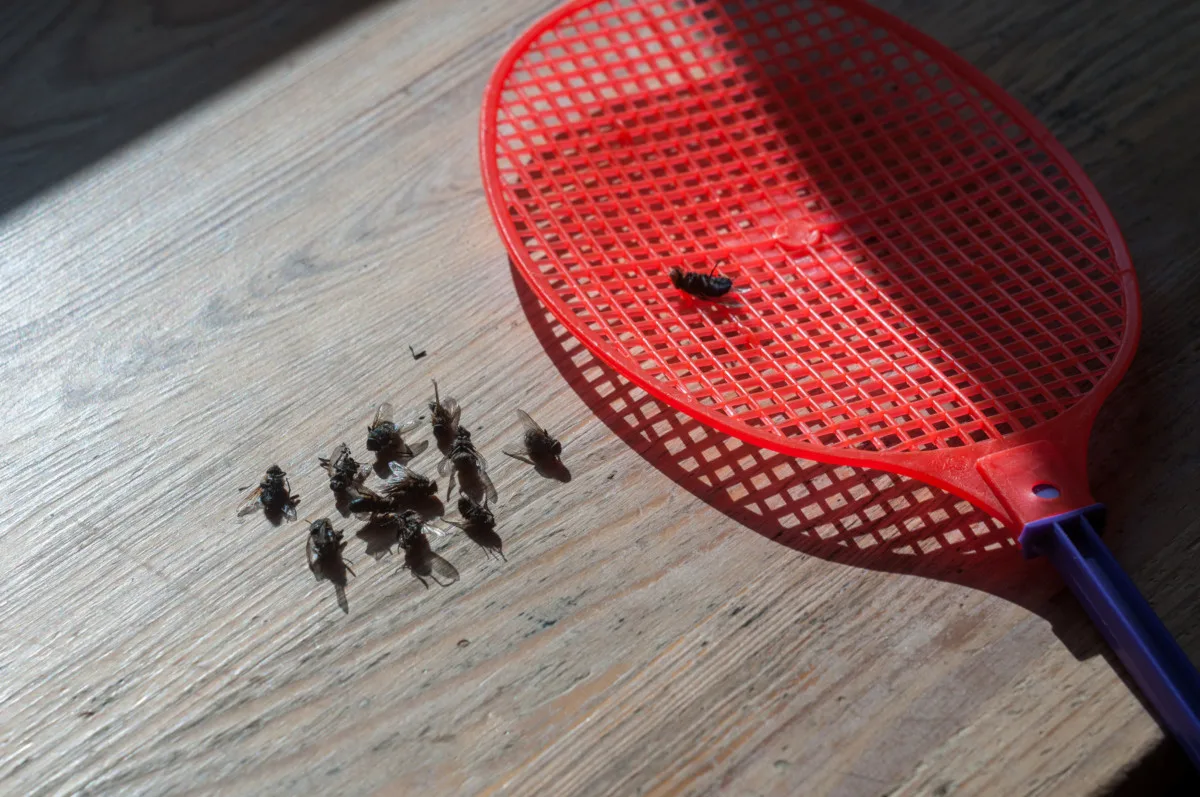
No matter what you do, the fly is going to see your swatter. But by anticipating the movement ahead of time, you’ll have a much better chance of landing your whacks.
7. Hang Up Fly Paper
It may be old-fashioned (and quite unsightly when strung up all over the home) but fly tape is still a very effective means of controlling house flies – especially when they’ve descended in hordes.
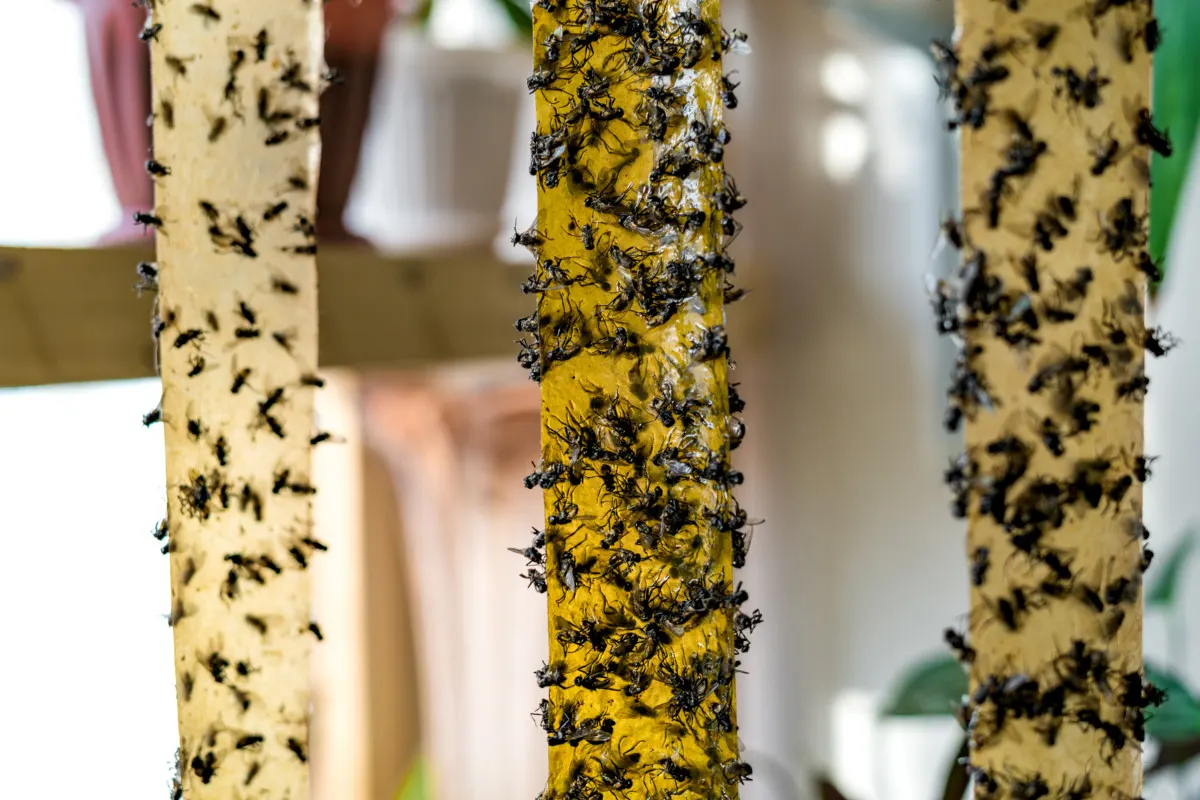
Fly paper is covered in a sweet and sticky substance that helps lure them in. Any fly that bumps into the paper will be stuck in place.
As the tape becomes more and more riddled with flies, toss it out and replace it with a fresh roll.
8. Redirect House Flies with Light
A more humane approach, shoo those pesky house flies back outside by showing them the way.
This works best when the majority of the flies are located in one room. On a bright and sunny day, close the blinds to darken the room as much as possible. Leave a small gap exposed on one window that will let in the light.
Open up the window and pop out the screen. The house flies will go towards the light and happily exit the home of their own accord.
9. Empty Your Kitchen Compost Frequently
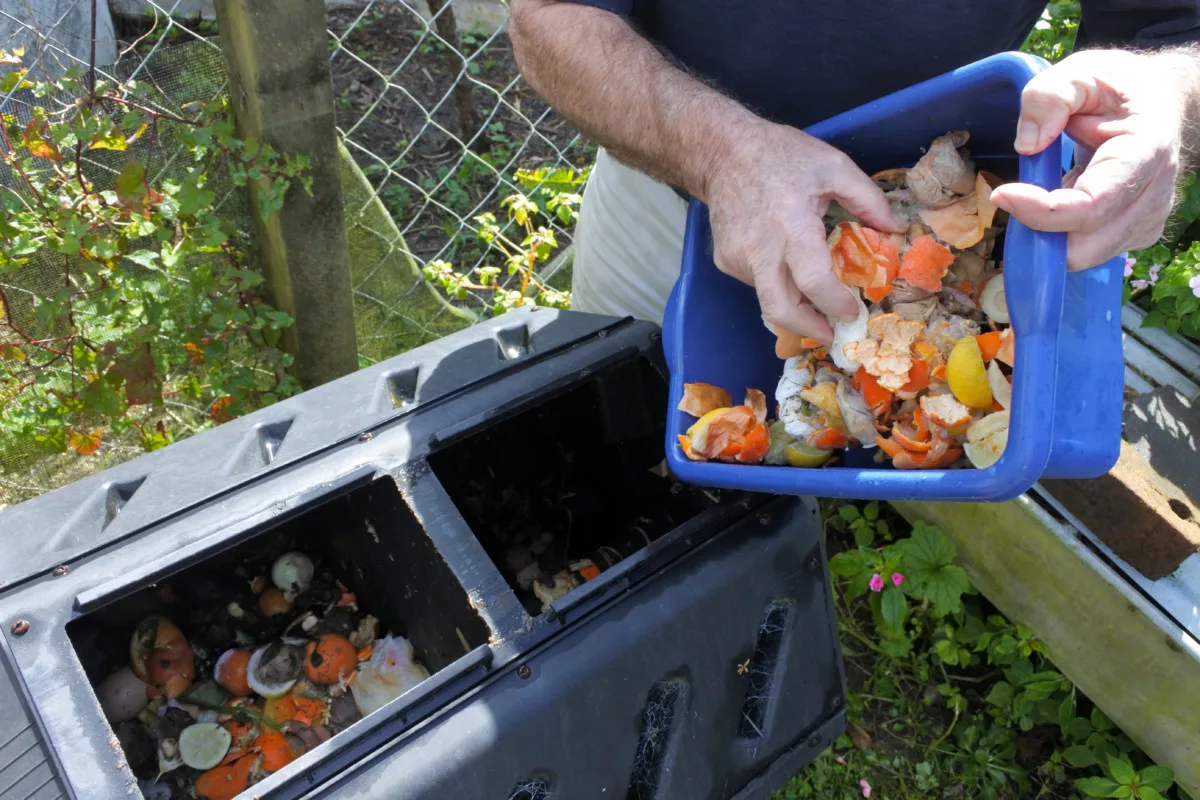
A favorite spot that more than meets the female house fly’s egg-laying criteria is the kitchen compost bin.
To prevent house flies from discovering this haven of decaying food, use one with a tight-fitting lid and empty it out into the outdoor pile every day or two.
10. Clean As You Go
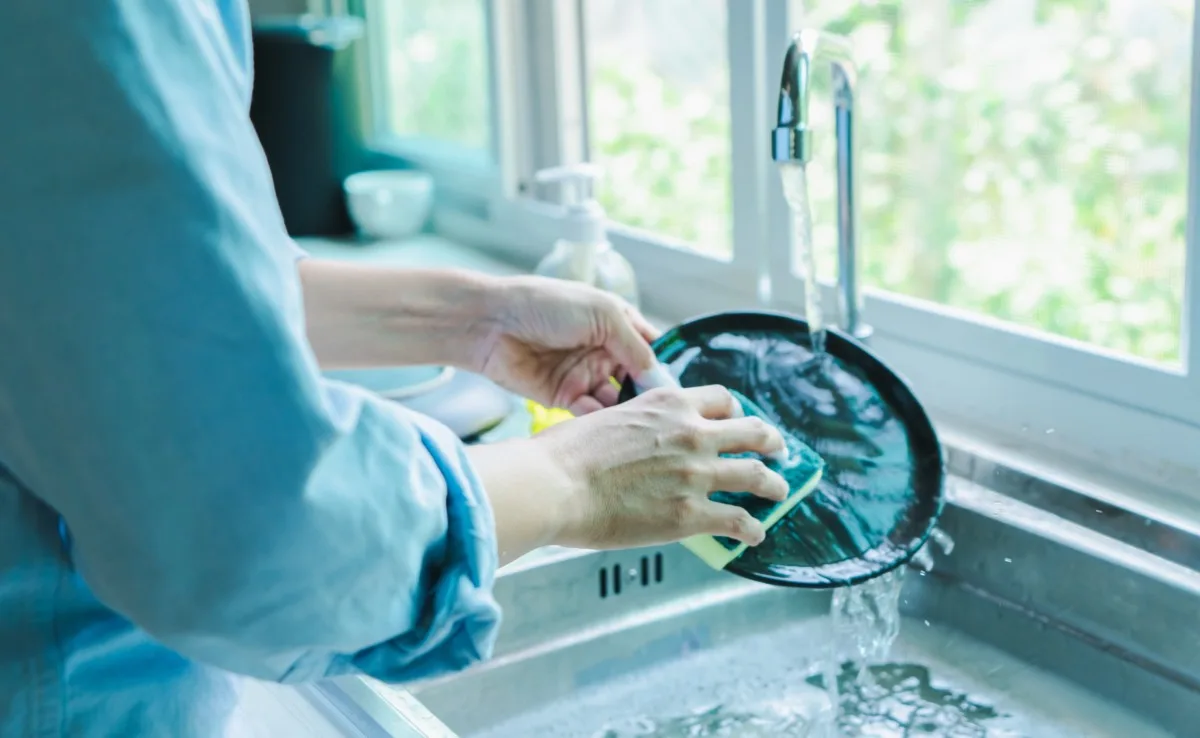
Wipe up spills right away and don’t leave dirty dishes and glasses out overnight. Keep the trash can covered and take out the bag as soon as it’s full.
Pick up and rinse out pet food bowls as soon as they’ve finished eating, especially if it’s of the wet food variety.
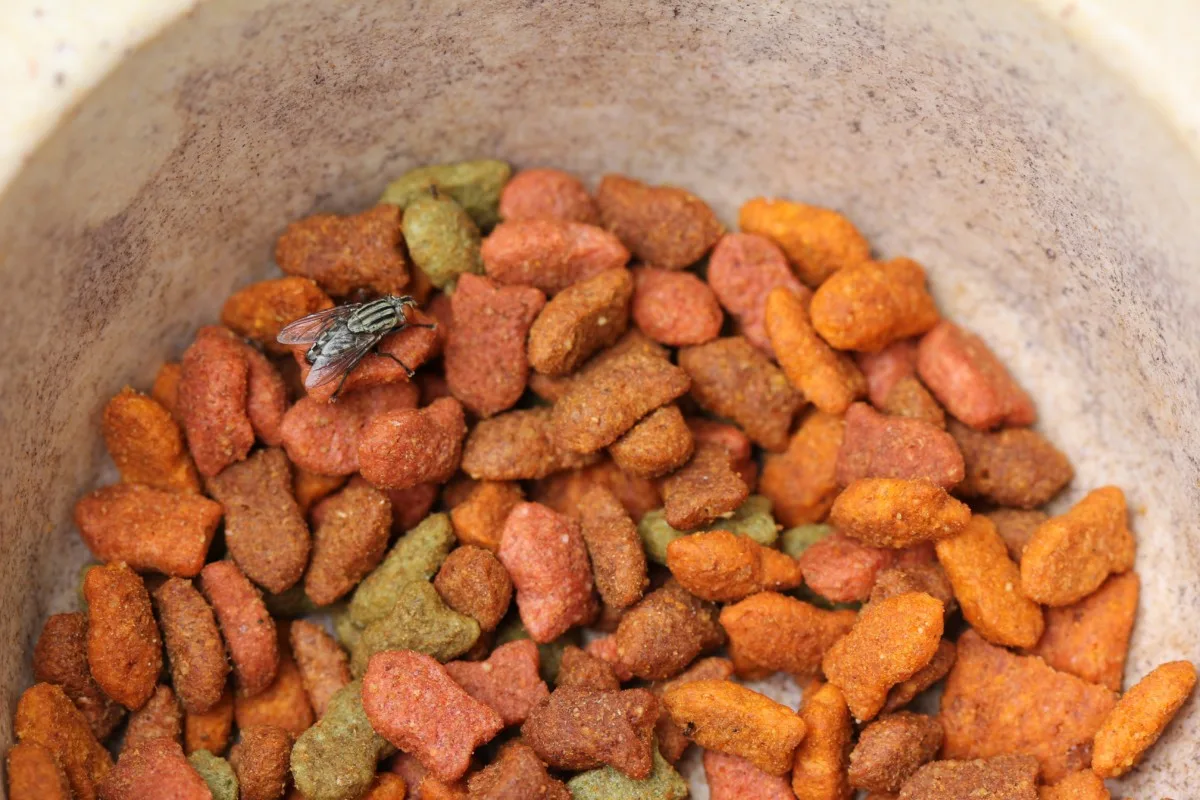
And speaking of pets, promptly dispose of their droppings as well. A cat’s litter box is an ideal hatching ground for house fly eggs.
11. Turn Off the Porch Light

All sorts of insects are irresistibly drawn to light.
Whenever possible, turn off your exterior lights at night so house flies and other bugs aren’t guided towards your home.

Get the famous Rural Sprout newsletter delivered to your inbox.
Including Sunday musings from our editor, Tracey, as well as “What’s Up Wednesday” our roundup of what’s in season and new article updates and alerts.

